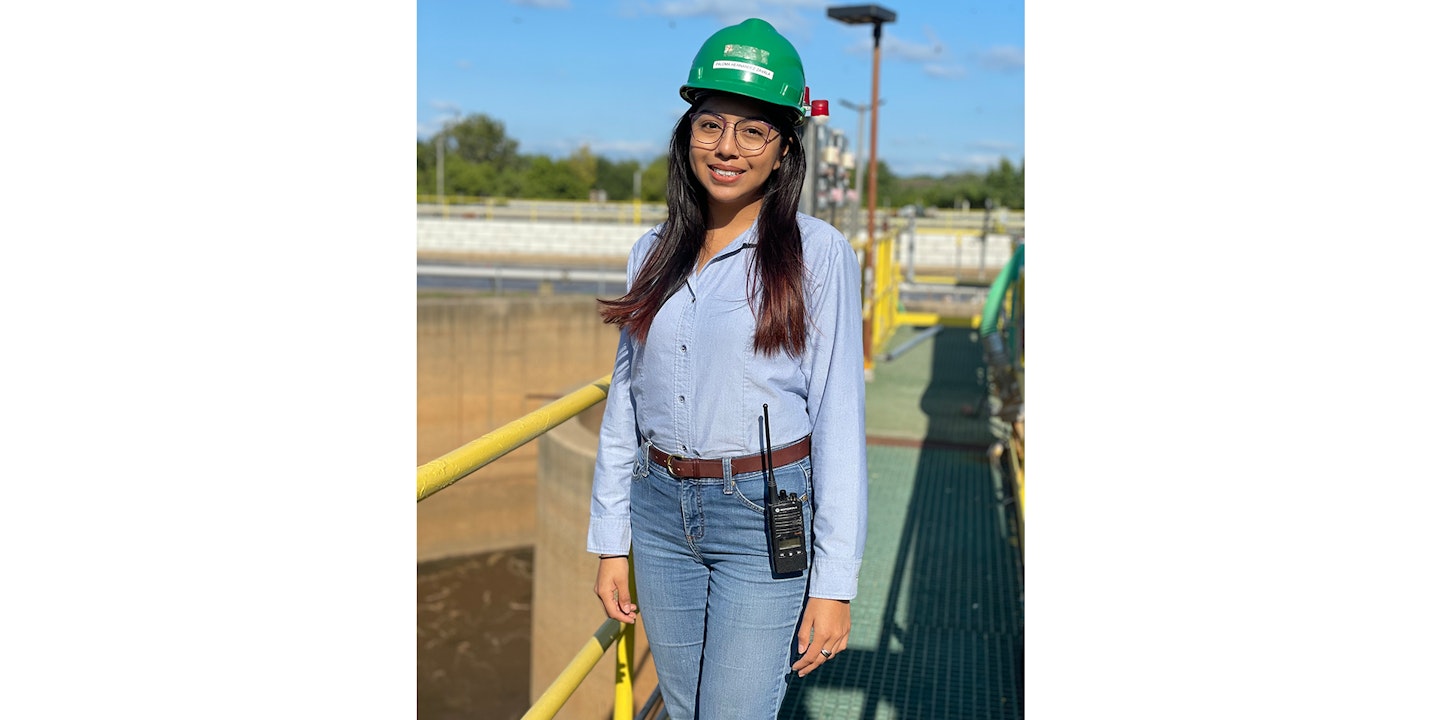Paloma Hernandez
Environmental Manager at JBS Souderton, PA

Protecting the environment is a passion for Paloma Hernandez, the Environmental Manager at JBS Souderton. In college, she researched waste removal and water treatment while she earned her degree in Biotechnology Engineering.
She joined JBS four years ago and sees her role as driving efficiency and sustainability in an essential industry: food production.
“My job is to make sure we are fulfilling our mission in the most efficient way, while complying with all environmental regulations,” Paloma says.
When JBS committed $1 billion to help the company reach net zero greenhouse gas (GHG) emissions by 2040, Paloma got to “turbo charge” her work.
“For a company that’s in charge of feeding people, to take the time and the resources to put effort into driving our emissions down … it’s huge,” she says.
One of her key responsibilities is managing the facility’s wastewater treatment apparatus, which processes over 1.5 million gallons per day. Water used in the production of food must be purified before it is returned to nearby Skipper Creek.
How is this accomplished? Naturally, with biology. Bacteria are introduced to the wastewater to break down substances like ammonia.
“If you want zero pollutants in your water, you have to keep the bacteria happy so that they are able to function effectively,” Paloma said. One way to keep the bacteria “happy” is to provide them with a steady flow of oxygen.
Air must be supplied to the wastewater during treatment, with the goal of ensuring that the oxygen levels remain consistent.
Traditionally, that air has been supplied with a series of fans. But they can be costly to run and can’t be adjusted with rising and falling oxygen levels.
So, Paloma is replacing Souderton’s six existing fan blowers with a state-of-the-art turbo blower. It can modulate itself using oxygen sensors in the wastewater basins, saving energy when oxygen levels are too high for the bacteria and increasing the air supply when oxygen levels drop.
“The key word here is efficiency,” Paloma says. By not having six blowers operating at full capacity, the turbo blower will reduce electricity usage at the facility.
Once operational, this turbo blower will provide a 30% efficiency gain for the aeration system. Electricity use at the facility will be reduced by 900,000 kilowatt hours per year, resulting GHGs by 285 metric tons.
“One of my goals is to upgrade our facility with more efficient technology,” Paloma said, so installing the turbo blower system was a clear choice.
Paloma sees this project, and the hundreds of others in progress across the company, as a worthwhile investment by the company.
“At the end of the day, we have to do what’s best for our home [Earth],” she said.